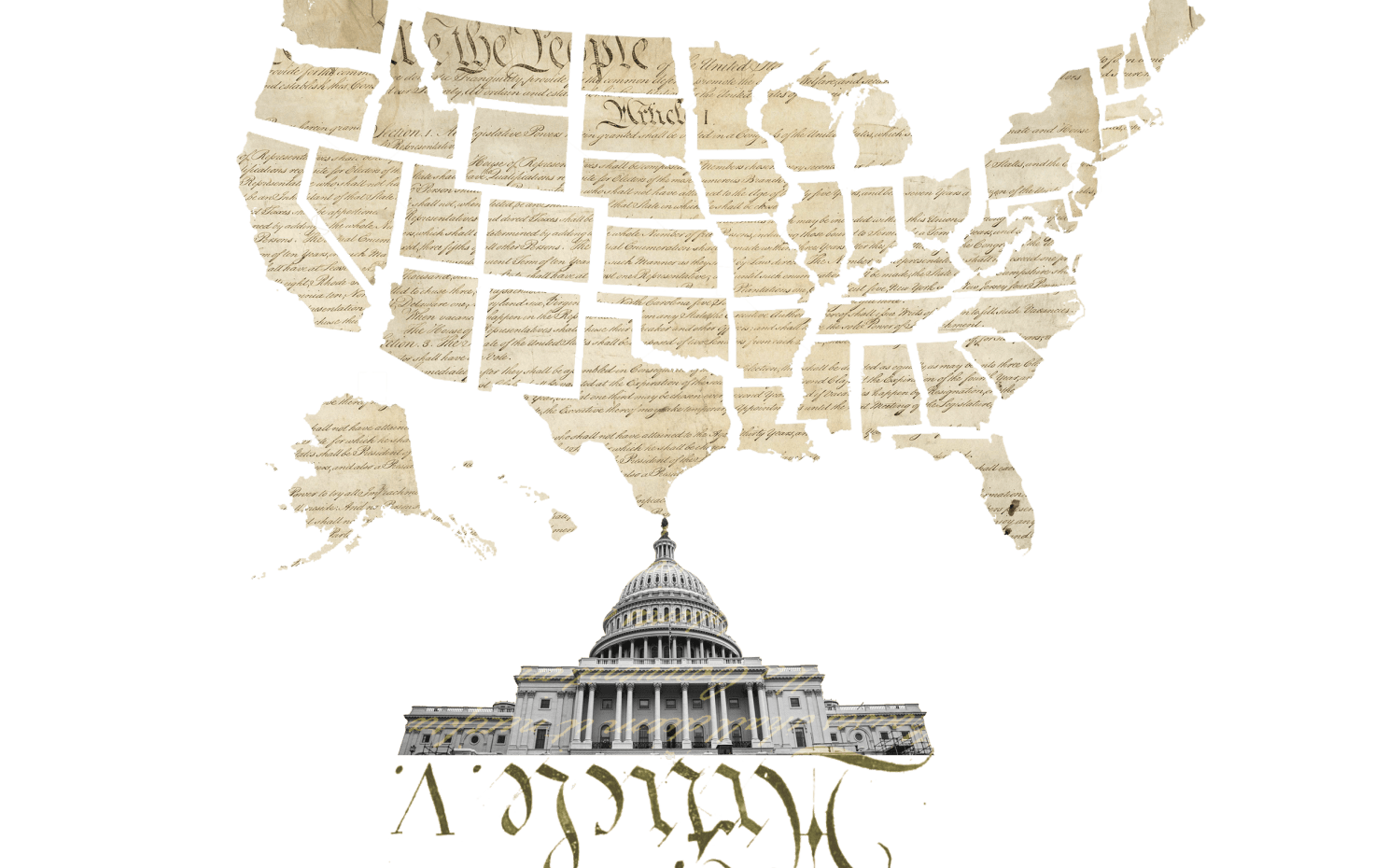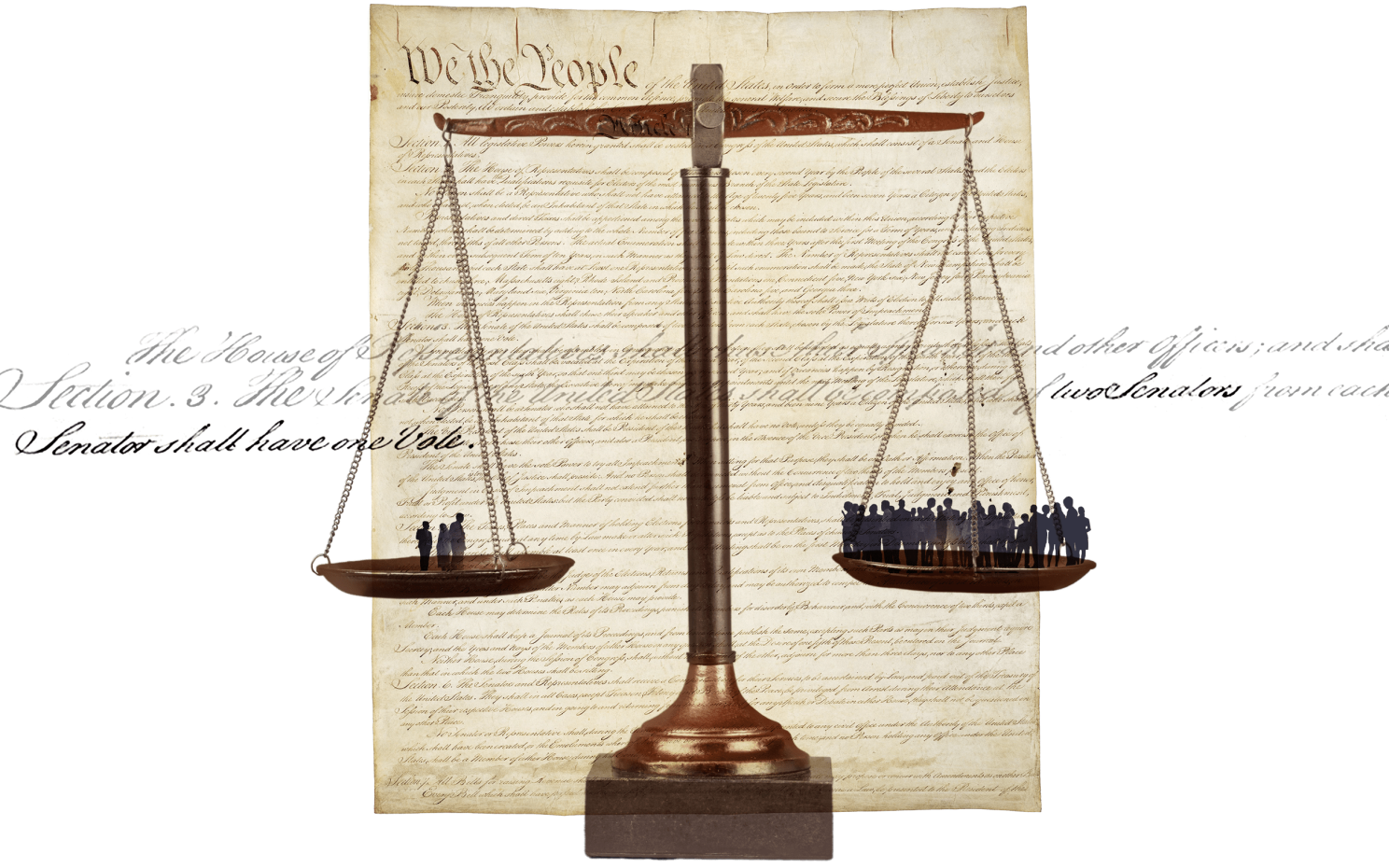Let the House grow!

Illustration by Judy Blomquist/Harvard Staff
A better Electoral College requires a Congress as elastic and flexible as the drafters of the Constitution intended, says Danielle Allen
Danielle Allen is the James Bryant Conant University Professor and Director of the Allen Lab for Democracy Renovation at Harvard Kennedy School’s Ash Center for Democratic Governance and Innovation.
The drafters of the Constitution brought a number of design principles to bear in working out its specifics. The government needed to have “energy.” That is, it needed to be able to get things done. But it also needed to deliver “republican safety,” which meant that citizens would always be protected in their liberties despite the energies of the government. Also, the drafters wanted to design in a “due dependence” of office holders on voters. This meant that office holders would always know that they were accountable to voters, because they served only at their pleasure (instead of at the pleasure of donors, special interests, and party activists).
A final critical design principle was the need to fuse a principle of popular sovereignty with the principle that the drafters were forming a union of states. The principle of popular sovereignty demanded that the government should always track the ever-shifting shape of the people and therefore exhibit meaningful flexibility and elasticity. The principle of an association of states was meant to provide a steady and more stable rudder for the whole enterprise. The House was supposed to provide the relevant flexibility, turning over every two years, while the Senate was to be a continuous body, with only a third of its members potentially rotating out in any election cycle.
“A larger House would put representatives back in closer proximity to those whom they represent.”
On the whole, these principles continue to hold as good starting points for designing the institutions of self-government for free and equal citizens. We might debate whether we continue to be both the single people of a nation and also, at the same time, a union of states. Those who advocate for a national popular vote for the presidency, for instance, believe that we really have become a single people and that the concept of an alliance of states is a historical anachronism.
I disagree with that and believe we do continue to be both a nation and a union and need to design for that blended reality.
But what in the Constitution would I change?
I think we should expand the frame of the question to include laws that have changed the operation of the Constitution. Sometimes the best way to fix the Constitution is to fix those laws.
One significant problem was the 1929 Permanent Apportionment Act, which capped the size of Congress at its current number of 435. The body had previously grown with every decennial census. It was supposed to grow. Its relative proportions and geographic weightings were supposed to adjust with the population as the population shifted. But for the last 100 years, that principle of flexibility and elasticity has been abandoned. I believe it’s time to let Congress grow again so that it can meaningfully shift in shape with the population. Both the German Bundestag and the U.K. Parliament are larger than our House of Representatives, even though their populations are roughly a quarter or a fifth of ours.
A larger House would put representatives back in closer proximity to those whom they represent. It would increase the number of office holders and therefore the likelihood that we could meaningfully diversify who serves. Perhaps most importantly, it would also restore a principle of elasticity and flexibility to the Electoral College. The number of electors flows from the combination of the number of Congresspeople (the popular sovereignty principle) and from the number of Senators (the union-of-states principle). If Congress could grow, the current overweighting of the Electoral College to less-populous places would be rebalanced. California, Florida, Texas, and New York could get their fair share. This would rectify the legitimacy problem currently developing around the Electoral College and give us more responsive representation.
— As told to Christina Pazzanese/Harvard Staff Writer









